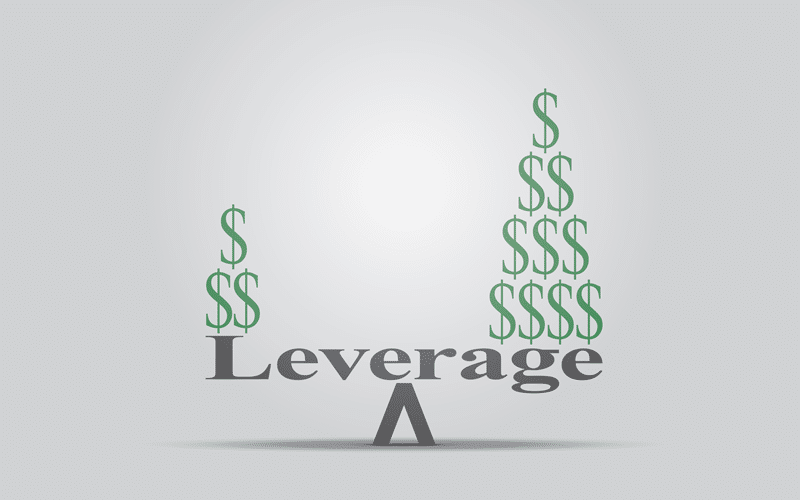
We hear and read so many recurring statements about leverage in forex, such as it’s a double-edged sword or it’s the number one reason people lose substantial amounts of money. Naturally, the question becomes what the correct leverage ratio to use is.
People throw around different numbers like 1:200, 1:100, or 1:50. Some brokers have received negative feedback over offering leverage as high as 1:3000 or even unlimited. Although there should be some consideration over the ratio when one opens any trading account, the number itself isn’t so important.
Ultimately, leverage is only a tool, and we can choose how much of it to use. This article will explore concepts about what affects a trader’s ratio, the pros and cons of when it’s higher and lower, and then concluding as to why the figure itself doesn’t really matter.
The relationship between leverage, experience, and the account balance
The overall premise of the relationship between leverage and experience is the newer a trader is, the less leverage they should pick. As they get more experienced, the ratio doesn’t matter so much.
When a trader is trading live for the first time, they might not yet have the experience of using the appropriate position sizes and controlling their greed. If the leverage is too high, it leaves them vulnerable to the odd moment when they don’t practice the proper money management.
It’s difficult to put down a specific ratio because it depends on several factors, such as how much they are starting with and the margin requirements of the instruments they are trading.
Account balance
Generally, the higher the equity, the less leverage a trader should choose. Trading with a larger trading account means that even when one trades infrequently, one’s gains are noticeable.
Therefore, that person doesn’t need to ‘gear up’ their account because there is a lot of money in it already.
Margin requirements
It’s essential to consider not all pairs have the same margin requirements. One mini lot on EUR/USD does not equate to the same monetary value on another market like GBP/USD.
So, if a trader is going to trade most of the pairs, they will probably need to either have more funds or utilize slightly higher leverage.
Choosing the appropriate ratio needs research into the factors above while also considering the experience aspect as well.
Pros and cons of lower leverage
Having lower leverage for some could act as a protective measure since it would limit the chances of incorrect position sizing and over-leveraging. Some may also say that, overall, lower leverage equates to less risk, though this isn’t necessarily true.
For instance, someone could still risk 50% of their trading capital on one position even with leverage lower than 1:50. Lower leverage doesn’t automatically mean one will lose less; it just means there is a lower likelihood of opening unnecessarily large positions since it acts as a form of barrier.
The main drawback of lower leverage is the trader needs to put up more in their balance.
Pros and cons of higher leverage
Though some may automatically assume that higher leverage is terrible, there are a few benefits of having it if one’s an experienced trader. We should always remember a trading account is merely a margin account, meaning that traders never need to keep beyond what they plan to risk on a trade.
Someone’s equity is no indication of their total risk capital. Several traders prefer higher leverage because they know they don’t need to deposit their entire disposable income in one go.
Having all their capital in the account may expose them to slippage risks, and it might be their safeguarding principle not to fall into the temptation of opening larger positions than necessary.
Therefore, they could purposefully keep a smaller balance, knowing well they can also deposit more at a later stage if need be. The higher leverage would allow for the opening of bigger positions without exposing their true risk capital.
Regarding disadvantages, there is still a small danger where one could trade emotionally and use all of the leverage or make a position sizing error.
Why the leverage ratio ultimately doesn’t matter
While this article has given enough logical reasoning over the advantages and disadvantages of lower and higher leverage, the most important thing is knowing the monetary amount at risk.
Although there are some nuances over the different ratios, there isn’t much difference once we’ve considered all the above factors. The dollar amount someone risks on a position will mostly remain the same regardless of the leverage they’ve chosen.
Ultimately, it isn’t the leverage that blows traders’ accounts; it’s the misuse of it. For example, let’s imagine two traders have the same account balance of $1000, but one uses 1:100, and the other uses 1:500 leverage.
Someone might say the latter trader is taking on more risk, though if both are risking $20 per position, they both could lose an equal amount regardless of the available leverage. It is true one can open larger positions with 1:500 leverage, though this would be due to a trader’s greed and free will rather than the leverage itself.
If someone wants to risk more, they can either deposit more money or grow their trading account through steady gains. Fortunately, leverage is not forced upon us. We can always choose to lower it or only use a carefully limited portion of its allocation.
Final word
One of the main attractions of forex over other financial markets is leverage. This feature allows traders to put a little down as a deposit to open bigger positions than otherwise.
As one becomes more experienced, they will balance not keeping too much in their account but still covering all their positions according to a predefined dollar amount risk. Ideally, this is how we should be thinking of leverage.
A higher ratio doesn’t automatically equate to more risk unless a trader uses all its allocation. Therefore, there is no recommended leverage percentage to use in forex because of the many factors this article has explored.
The critical point boils down to knowing the maximum monetary value of one’s losses and having a balance allowing enough of an expected drawdown according to a particular strategy.








Leave a Reply